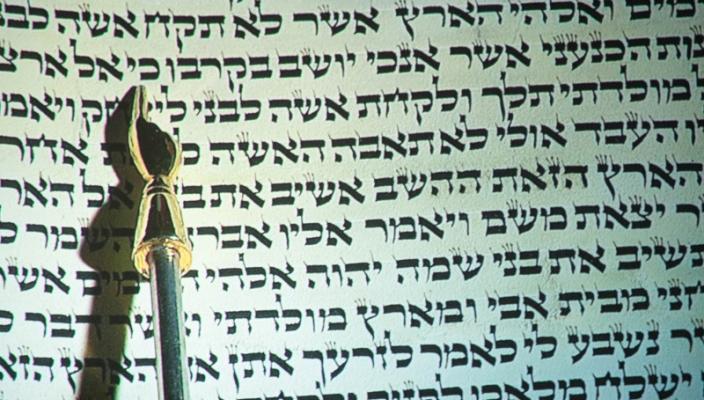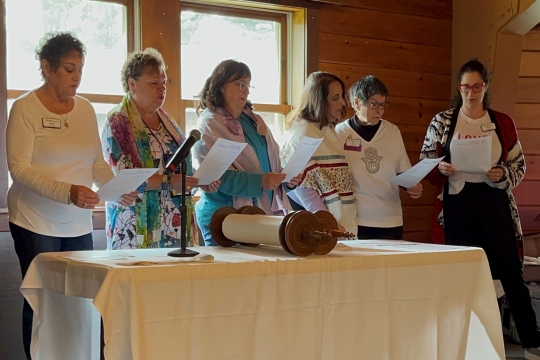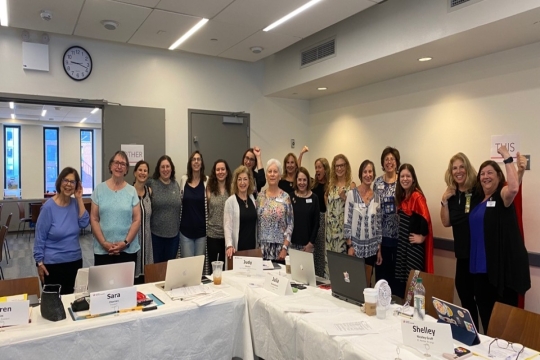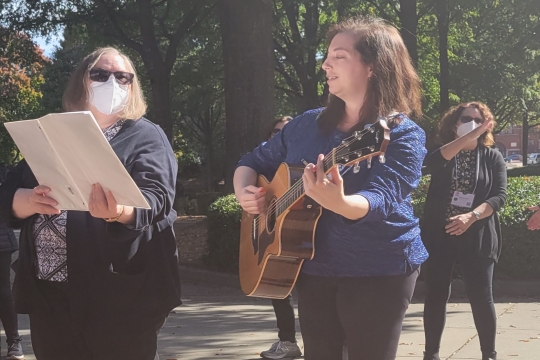
In Parashah Va-yak’heil God continues the descriptive instructions in the actual construction of the Tabernacle with three specific introductory instructions. The first covers the observance of Shabbat. Moses tells the Israelites that God has commanded that work can occur for six days but on the Shabbat all shall rest and keep this day holy or you shall be put to death. In fact, “You shall kindle no fire throughout your settlements on the Sabbath day.” (Exodus 35:3). This places the importance to be mindful of Shabbat
The second instruction describes the specific materials used in the formation of the Tabernacle. God commands the people to gather their donations of materials like copper, gold, and silver, various colors of yarn, animal skins and hair, spices to blend with oils, enhancing fragrances, and several types of stones to use for the ephod and breast plates. These gifts shall come from the heart and not be obligatory.
The next instruction is the calling of certain people to bring their craft to the construction. God calls on all who are skilled to create the detail aspects of the Tabernacle including posts, the coverings, the table, the lampshade, the oil, furnishings, and the entrance screen for entering the Tabernacle. In this Torah portion, God is very specific about which materials are to be used, the measurements and details down to the number of holes in each cloth and the position of loops as well. These are the blueprints in the construction of the Tabernacle.
God designates Bezalel, son of Uri, son of Hur, of the tribe of Judah, to manage the project because of his knowledge and skill in all aspects of design and construction. Women are called upon to spin yarn, weave the cloth, and join the men in this sacred building. The structure and framework are described in detail. The altar including the items to be used are listed. The parashah ends with the fabrication of the enclosure made of the cloth panels, poles, and metal bases separating the sacred space from the space outside.
This parashah lays out a framework and structure for future construction of tabernacles. It suggests materials to use, the purpose of stones and gems to ornament the elements used in the sacred space, and the recommendation for the gathering people who have specific talents and skills to be involved in the creation of this space.
In forming sisterhood and temple boards, any kind of governing board, the same details apply. We interview individuals to learn about their strengths, experiences, and talents. We consider what areas need be examined, made stronger, or lack deficiencies.
In our sisterhood boards, we have those who have been involved for years in various aspects of our temple, from assisting our religious school with programming, materials or supplies to offering our youth groups camperships to local Jewish camps. Our women, who look for connections and caring communities to nurture their souls, engage in fundraising efforts to support all the programming, camperships and scholarships sisterhood provides. All of these sisterhood board members and committee chairs bring their expertise while learning and developing their leadership skills.
In this parashah, with the outlining of detail measurements and structure some may find information overload. But our bylaws are the detailed instructions and outline of our structure. These are the blue prints of our organization. They cover all the governing aspects including the job descriptions and duties of our officers and chair people. They cover the dates for nominations, elections, and the period of service. Our bylaws describe who is a member and under what circumstances. They also support and align with our values and mission as an organization.
God commands the people to bring their stones, gold, copper, and other valuable items to the building of the Tabernacle. This, in some ways, can be compared to the contribution and accountability of our budget. Our budget reflects our values and our moral compass. It lists sisterhood contributions along with the record of where our money is spent.
I recently returned from a meeting of the WRJ Budget Committee where seventeen of us came together to create the 2019-2020 budget for Women Reform Judaism. Through this weekend we all discussed the importance of the work we do, the areas that need the most funding, and the ways we are going to request our members and organization to donate or contribute. The process is time consuming and often complex, but in the end, we will be presenting a budget to the WRJ board that reflects our values and what is important to WRJ in our continuing work for our sisterhoods, rabbinical and cantorial students, Progressive Judaism, and the Reform Jewish communities throughout the world.
Parashah Vayak’heil covers the detailed record keeping and instructions for our sacred space. This parashah may seem overloaded with details at times but these details are necessary as a working guideline. The importance of record keeping (budgets) and structure (bylaws) keep us focused on creating a just society reflective of our values and beliefs. They give us parameters from which to work and provide us vision to reach our goals.
Shari Charruthers currently serves as a WRJ Board Member. Shari serves on the WRJ Budget Committee and is an active member of the WRJ Pacific District. She is a member of Peninsula Temple Sholom Sisterhood in Burlingame, CA.
Related Posts

Parashat Yom Rishon shel Rosh HaShanah

Cultivating a Culture of Accountability and Belonging

